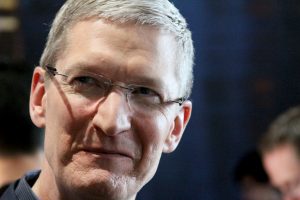Online shopping surged about 20 percent to a record on Cyber Monday as many consumers snubbed physical stores and took to the Web to buy holiday gifts.
Including shopping on personal computers and mobile devices, Internet retail sales on the Monday after Thanksgiving rose to almost $2 billion, according to researcher
ComScore Inc. (SCOR) That made it the heaviest Web-spending day ever for the fourth straight year. More than $23.9 billion has been spent on the Web through PCs alone since Nov. 1, an 8.4 percent gain from the same period in 2012, the company said yesterday in a statement.
Cyber Monday marked a bright spot in a holiday shopping season that so far has lacked luster, including the first spending decline for a Black Friday weekend since 2009. While e-commerce is
projected to make up only about 14 percent of total retail sales in November and December, companies such as
Amazon.com Inc. (AMZN) and
EBay Inc. (EBAY) are luring customers with the promise of daily deals, fast shipping and the ease of leaving the minivan in the driveway. They’re also catering to consumers who are browsing products from tablets and smartphones.
“The discounts are strong, and Amazon has gained share as it typically does,” ComScore Chairman Gian Fulgoni said in an interview on CNBC. “Their growth rates are well ahead of the overall market.”
Visa, Walmart.com
Businesses across the retail industry showed increased sales on Cyber Monday.
Visa Inc. (V), the world’s biggest bank-card network, said U.S. cardholders spent $7.8 billion from Thanksgiving through Dec. 2, a 30 percent increase from a year earlier. On Cyber Monday, Visa customers spent $2.6 billion, up 28 percent and the most of any day during the five-day span.
Wal-Mart Stores Inc. (WMT), the world’s largest retailer, said Dec. 2 was its biggest-ever online spending day, and that Thanksgiving to Cyber Monday marked the company’s highest five-day Web sales period to date. Top-selling items on Cyber Monday included an LG Electronics Inc. 50-inch television,
Apple Inc. (AAPL)’s iPad 2 and a Fisher-Price Power Wheels truck.
“The momentum we saw on Thanksgiving carried through to Cyber Monday,” Joel Anderson, president of Walmart.com in the U.S., said yesterday in a statement.
Amazon’s Cyber Monday same-store sales jumped 46 percent, while EBay’s climbed 32 percent, according to
ChannelAdvisor Corp., which provides services to sellers on both of those sites. EBay’s PayPal unit said in a statement that mobile payment volume more than doubled as of 2 p.m.
New York time on Cyber Monday compared with a year earlier.
Mobile Shopping
Retailers who tailored applications and websites for smartphone and tablet users benefited from the effort. Mobile traffic accounted for 32 percent of site visits, a 45 percent gain from a year earlier, according to International Business Machines Corp. In terms of sales, mobile devices drove more than 17 percent of online purchases on Cyber Monday, IBM said.
Such devices also helped make Black Friday and Cyber Monday the two biggest sales days in
North America in Groupon Inc.’s history, the company said in a statement yesterday. Transactions made on smartphones or tablets made up 55 percent of sales for the four-day weekend. Bookings rose 30 percent in that period, Groupon said.
Wayfair LLC, which began selling home furnishings on the Web in 2002, posted a 50 percent increase in Cyber Monday sales, marking the biggest revenue day in the company’s history. From Thanksgiving through Dec. 2, the store saw $25 million in revenue, a 56 percent rise from a year earlier.
Store Slump
Web-based retailers are reporting strong sales even as those with physical stores face a less rosy
holiday shopping season. Online spending increased 15 percent to a record $1.2 billion on Black Friday, according to Reston, Virginia-based ComScore. Because of the in-store slump, total purchases fell 2.9 percent to $57.4 billion during the four days beginning with the Nov. 28 Thanksgiving holiday, according to a survey commissioned by the
National Retail Federation.
“The real winners are, in fact, the consumers, who are recognizing more savings through competitive pricing and great promotions being offered in every category,” NRF Chief Executive Officer Matthew Shay said in a statement.
























